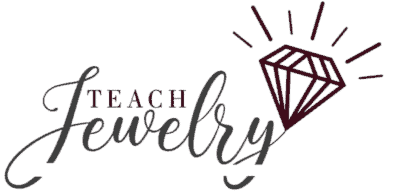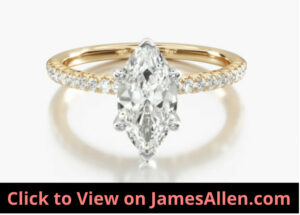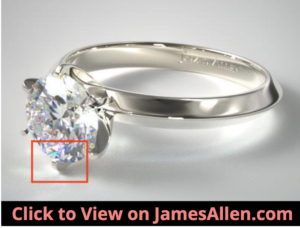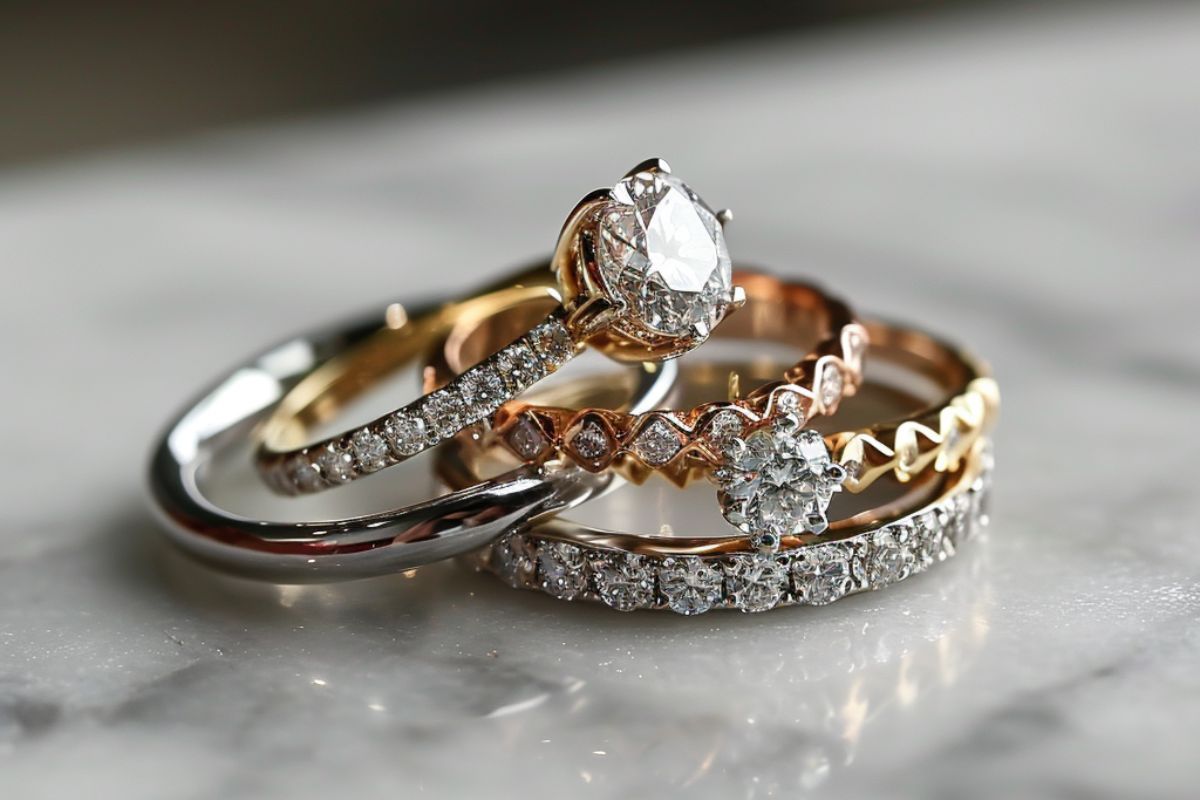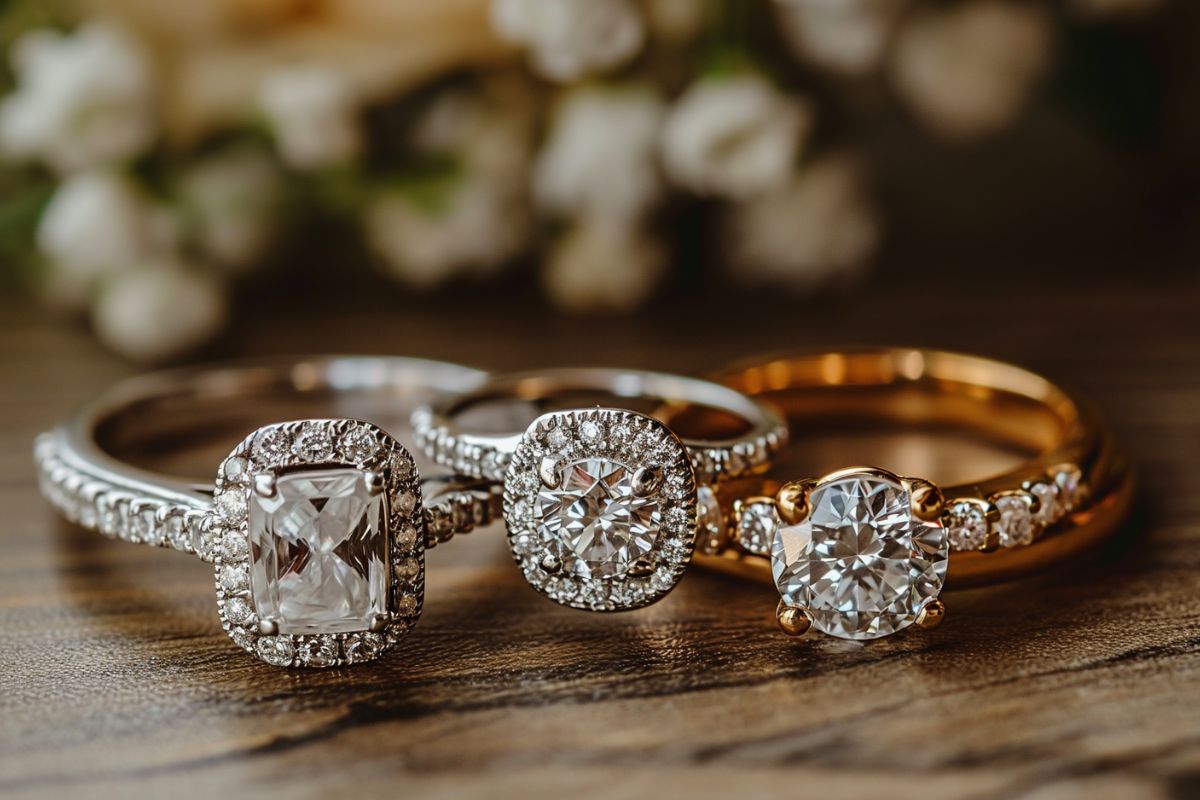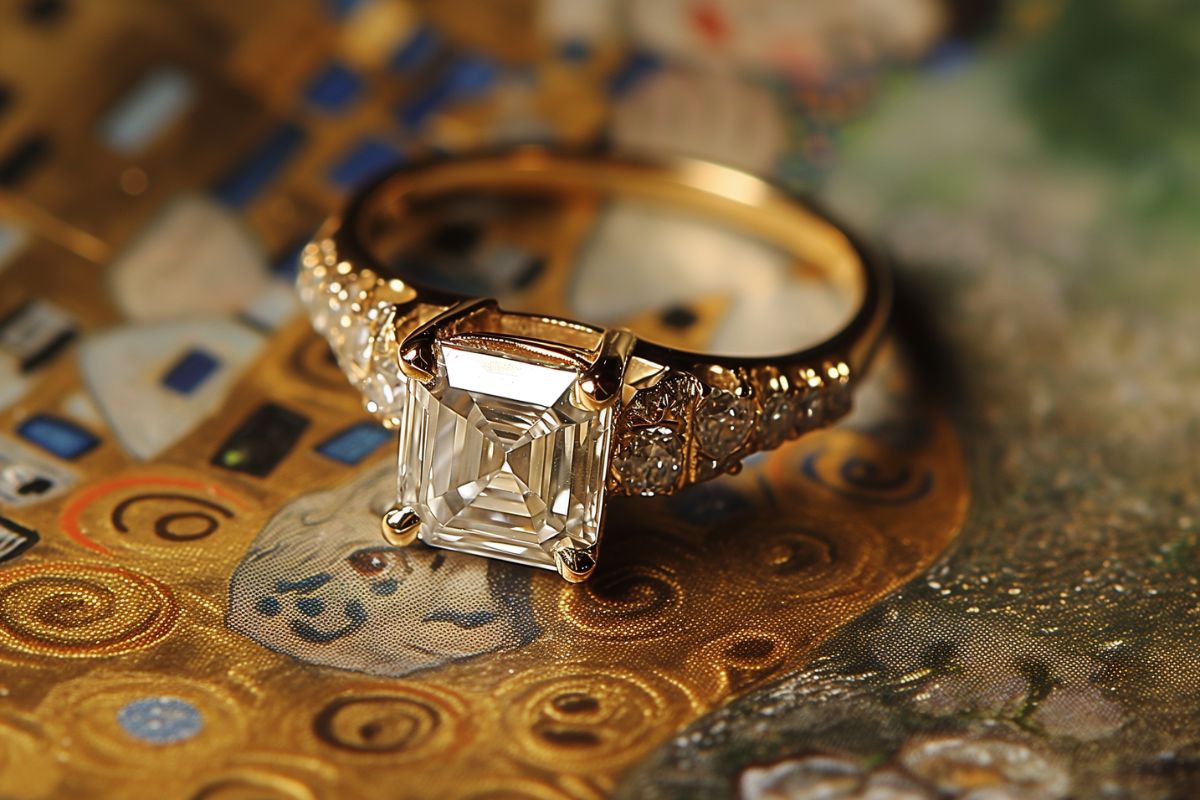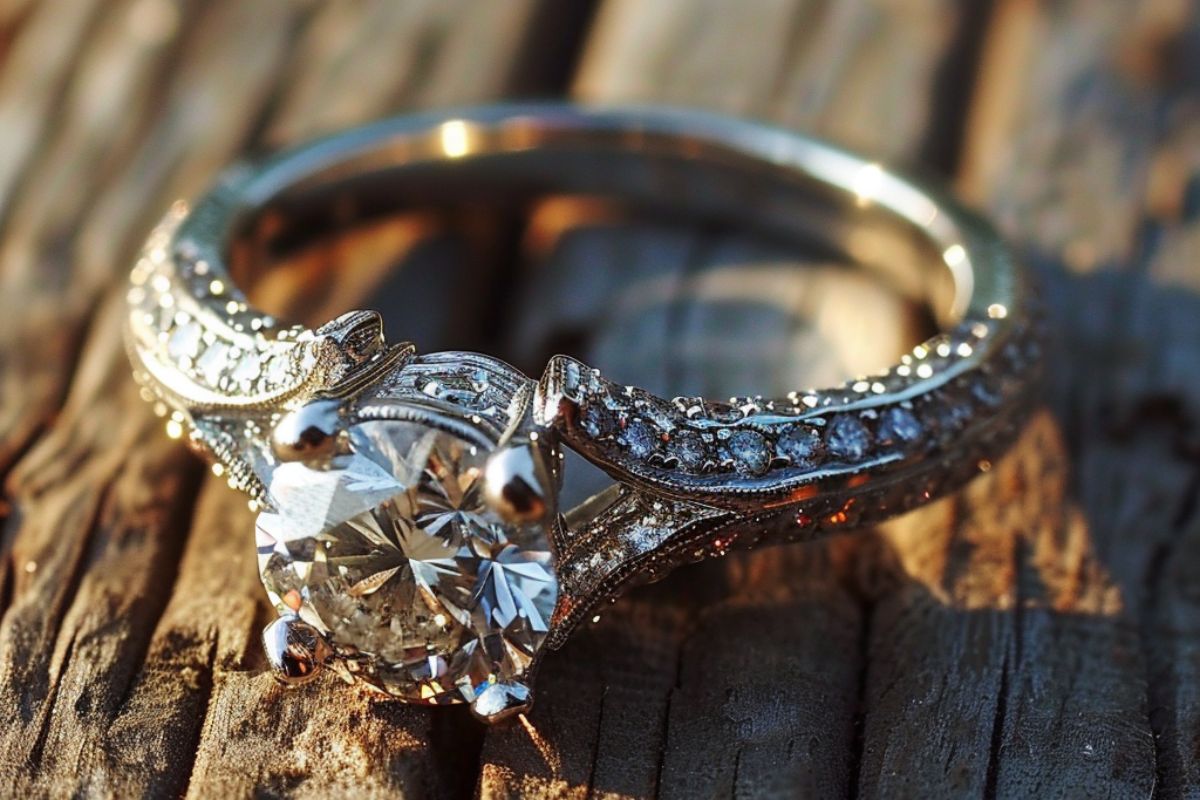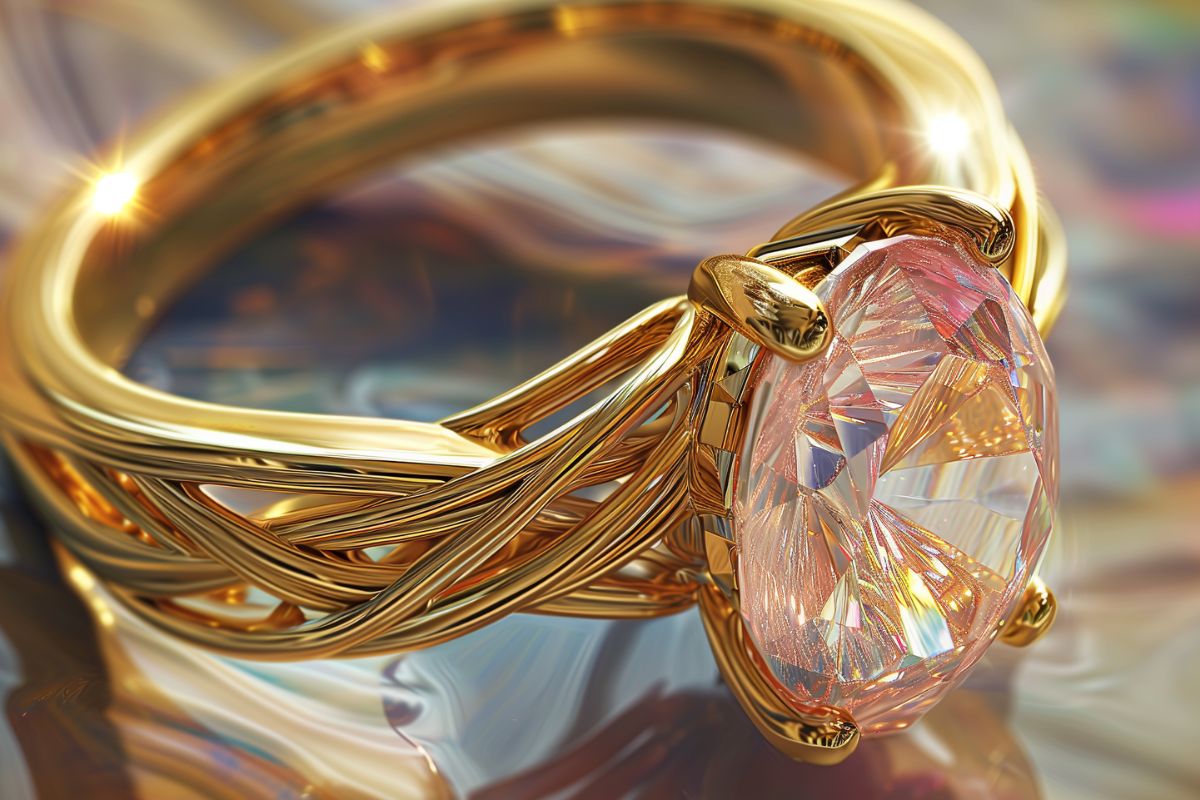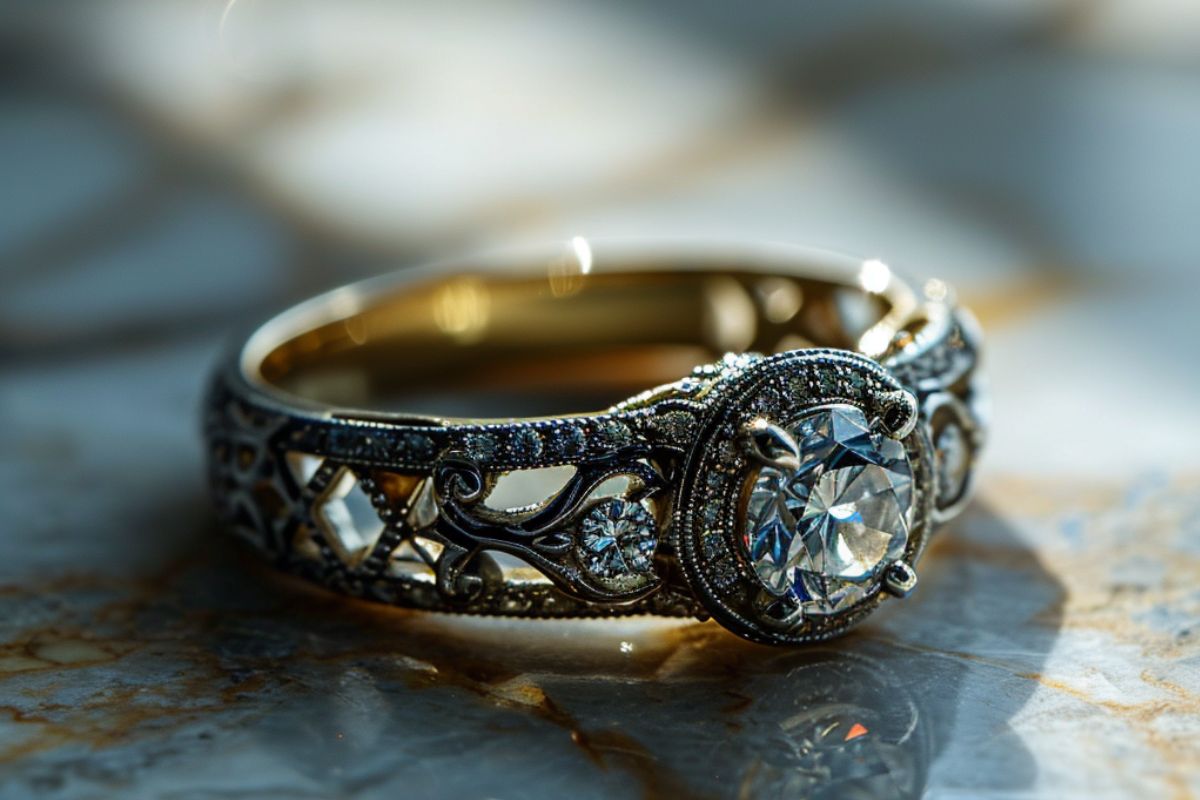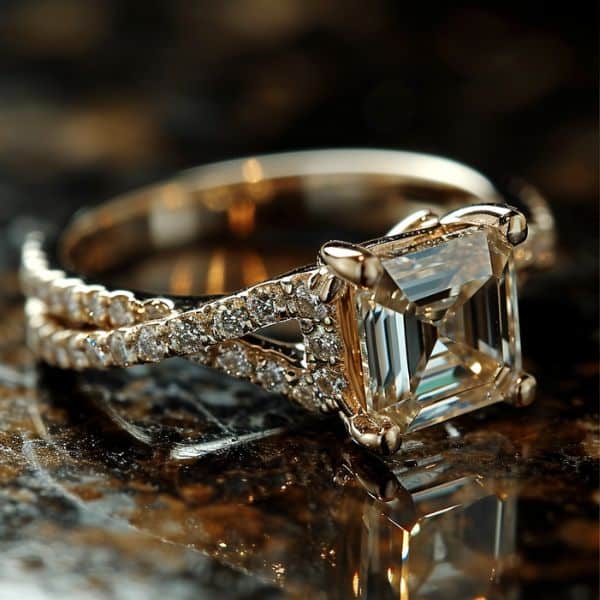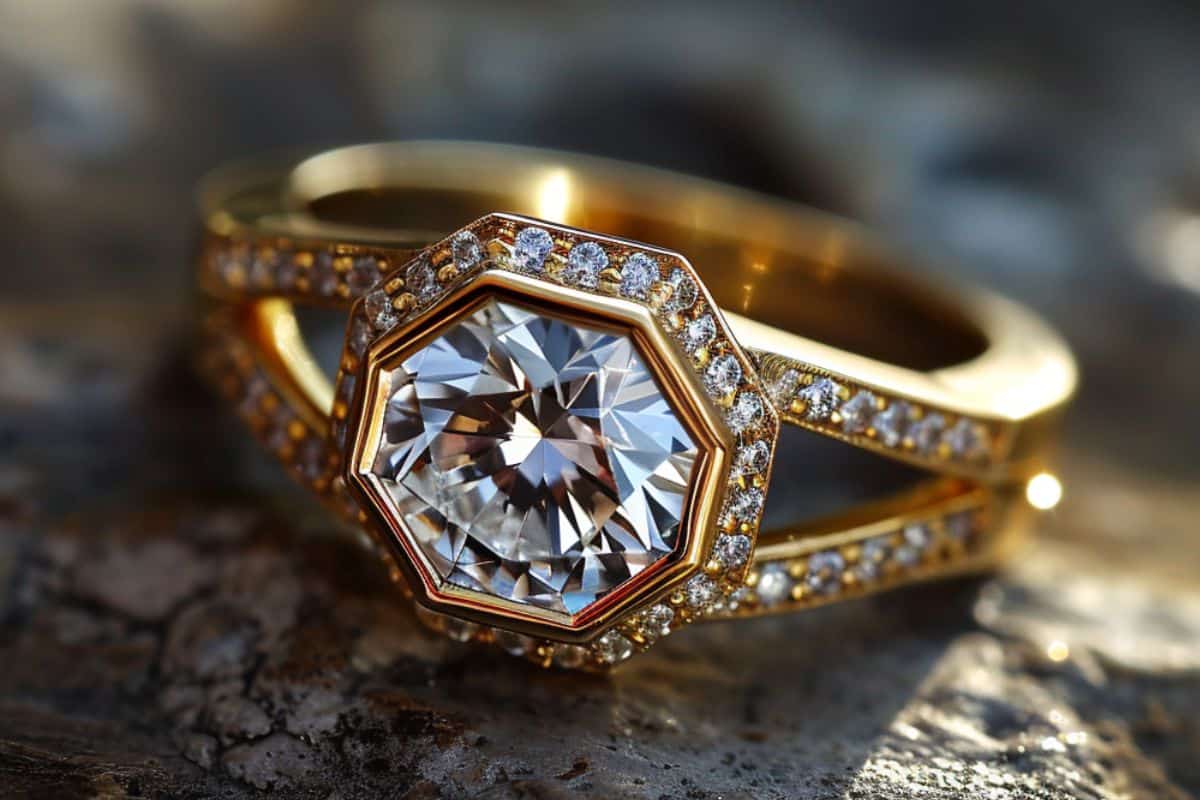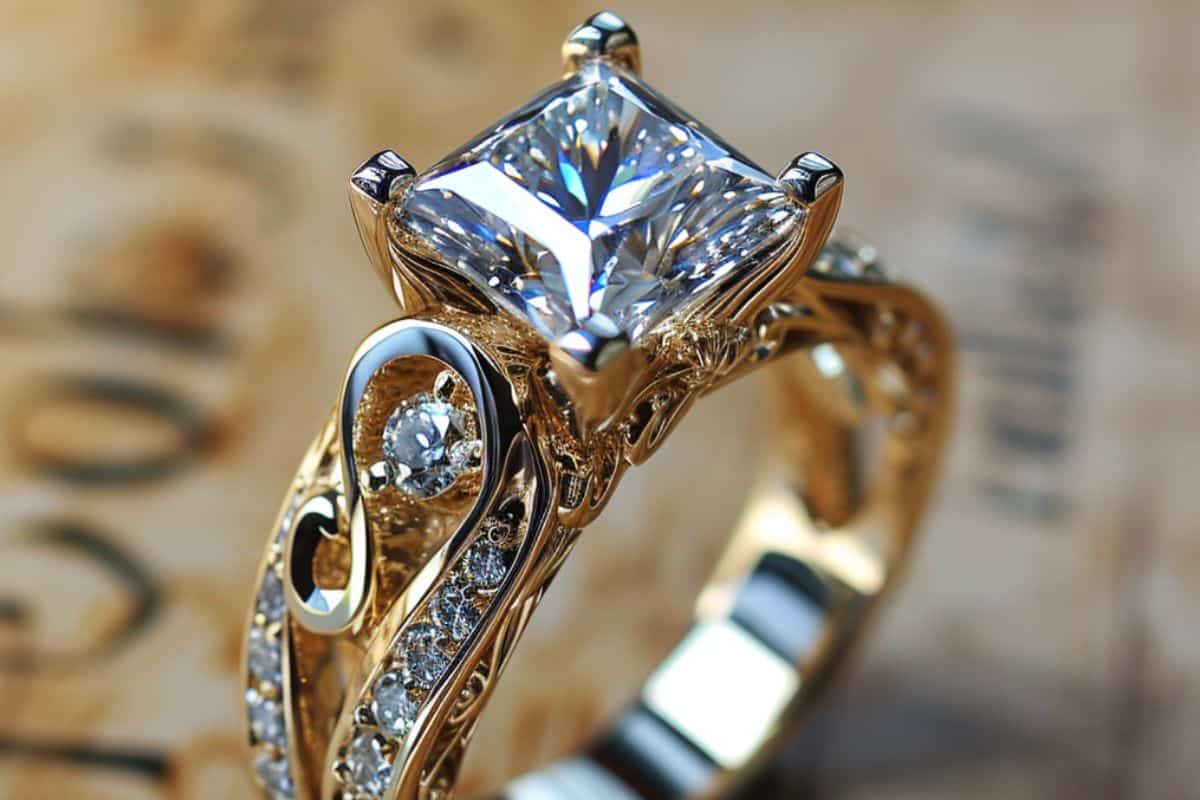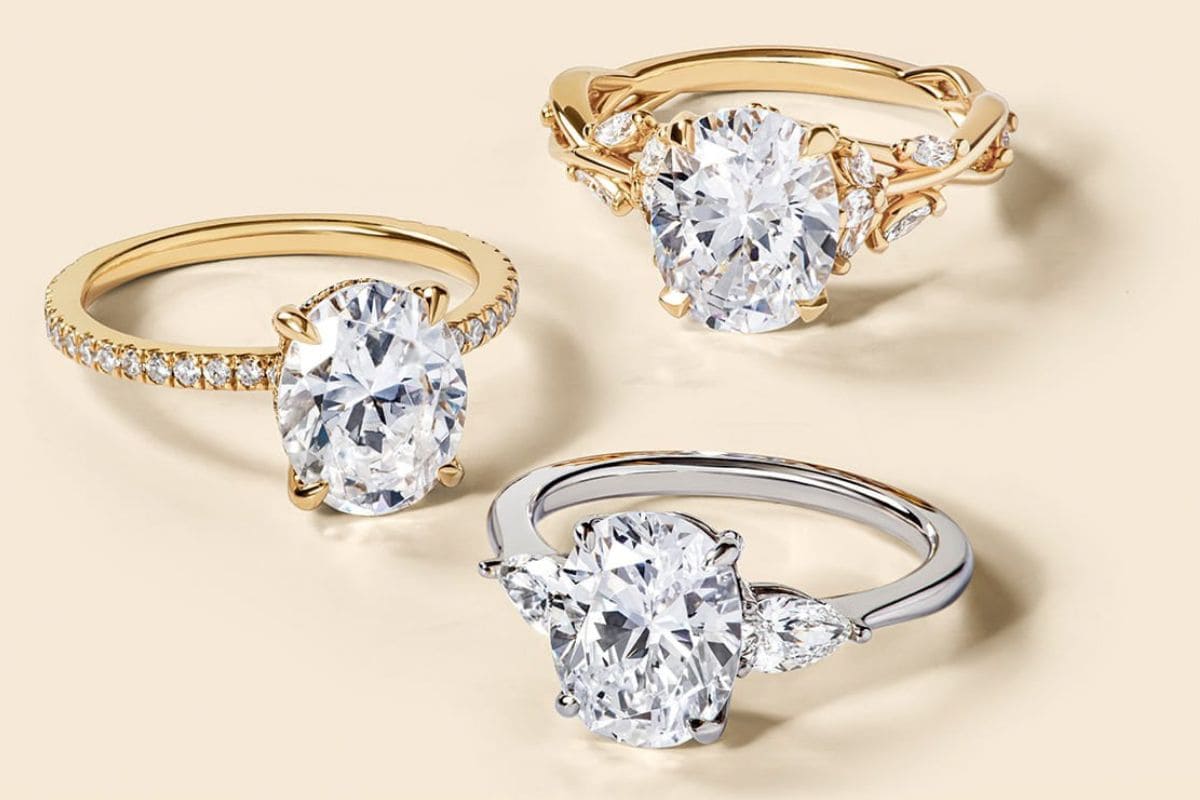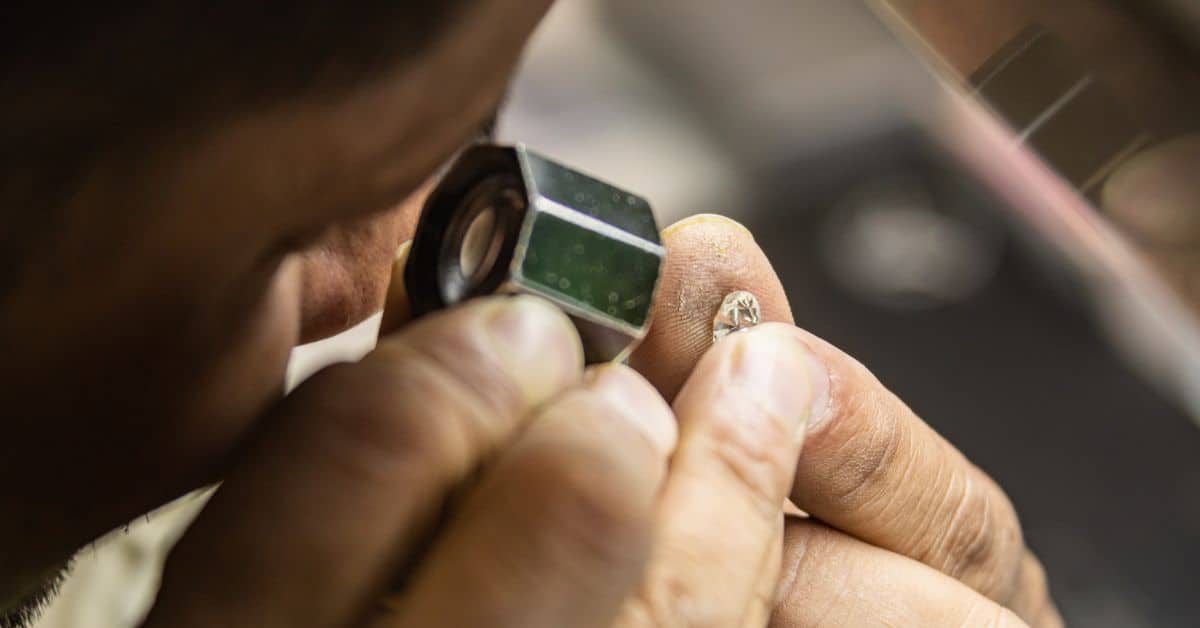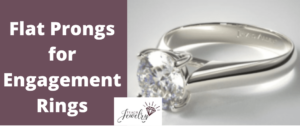
Prong settings include several variations with unique designs and their own functionality.
One example is flat tab prongs, which are named after the softer edges that latch onto the diamond.
We’ll explore flat tab prongs for engagement rings, including their pros and cons, how they compare to other types of prongs, and how to decide whether they’re right for you.
What are Flat Tab Prongs?
Flat tab prong settings for engagement rings feature four or six metal prongs that extend from the shank and grab the diamond by its edges.
They have flatter edges than traditional prongs, so they lay closer to the diamond.
As an example, check out this exceptional knife edge solitaire setting with flat prongs in 14K yellow gold.
When you rotate the image so the diamond faces you, it’s easy to identify the style of prongs and the way they sit flat against it.
Flat tab prongs cover a larger surface area of the diamond compared to other variations.
They’re a contrast to claw prongs and round prongs. Claw prongs have a pointed end, and round prongs have a semicircle at their point.
I’ve provided illustrations of those styles below.
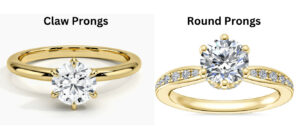
The difference in design between them and flat tab prongs is subtle, but each element plays a role in the overall aesthetic and performance of your ring.
Pros
There are several pros of flat tab prongs that could make it the right choice for your ring.
The primary advantage of the flat design is to keep the prongs from snagging on clothing or catching on other items. For rings that are worn every day, it’s easy for traditional prongs to get bent upwards if they’re caught.
This could cause the diamond to fall out.
Flat tab prongs are less susceptible because they’re tightly pressed against the diamond without a sharp end.
This feature is identifiable when viewing the piece from the profile view. I’ve zoomed in on the engagement ring below from this angle, where you can see how the flat prong holds the diamond.
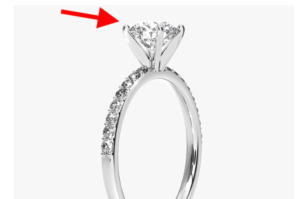
They’re also considered more secure than other types. Any time the prongs experience wear or tear or damage, it can loosen the diamond.
By having four or six flat prongs holding the stone in place, it’s unlikely they’ll need to be re-tipped as often.
Another advantage of flat tab prongs is they work well with multiple cuts.
Your choice of setting should depend on the shape of your diamond, and some types of prong settings are only recommended for certain cuts.
For example, diamonds with sharp corners should be covered by V-prongs.
Flat tab prongs, on the other hand, are fit for nearly every shape. Whether it’s a round brilliant, emerald, pear, or cushion cut, you’ll find them fit for flat tab prongs all the way around.
For example, here’s an engagement ring setting in 14k rose gold that holds a pear-cut with flat prongs.
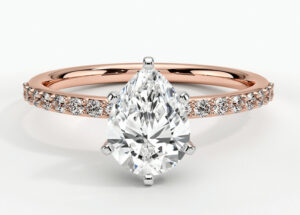
There are six prongs in total, with one on each end and four on the sides.
Cons
There are reasons flat tab prongs aren’t the most popular type of prong for engagement rings.
One of its downsides is the diamond sits lower on the piece, which diminishes its brilliance.
Settings that maximize brilliance place the diamond in a position where it can collect and return the most light.
This is achieved with a setting where the diamond is higher off your hand and the shank.
Flat prongs often keep it tight on the shank, so it can’t return light as well compared to other settings.
The second disadvantage of these prongs is they cover a larger surface area on the diamond.
Their flat, straight edges are wider than alternatives.
For example, a V-prong has a cut down the middle that leaves additional open space and is often used for cuts that have pointed ends, like this marquise engagement ring.
Rounded prongs also take up less room on the diamond and offer comparable security.
This isn’t an issue you need to consider for diamonds more than two carats.
The relative difference in the exposed table between various types of prongs is minimal.
For small diamonds, every millimeter matters, so you want the prongs to cover the least amount of diamond possible.
Flat Tab Prongs Versus Other Types of Prongs
There are several options to choose from within prong settings.
To make the best decision, it’s helpful to understand how flat tab prongs differ versus other types of prongs.
Flat tab prongs often have a squared-off edge, while rounded prongs form a half circle at the end.
There’s minimal difference in their functionality, but flat prongs generally sit wider and closer on the diamond. Rounded prongs more easily snatch on hair and clothing.
This problem is more pronounced on V-prongs and pointed or claw prongs. They’re longer and stretch farther onto the diamond’s table.
They can be sharp to touch and may sit the diamond higher versus flat tab prongs.
The same is true of the double claw prong setting.
Buying Tips
The first tip for buying a ring with flat tab prongs is to decide how many prongs should hold the diamond.
Just as there are variations in the prongs themselves, the number surrounding your diamond is also up to your discretion.
A higher number such as six or eight prongs is most secure, but many buyers choose three or four flat prongs to leave as much of the diamond exposed as possible.
Secondly, explore a combination of prongs if the diamond has a sharp corner. Many settings feature the same type of prong all the way around, but if you choose a marquise or pear cut, you could include both flat and V-prongs to secure the diamond.
For example, here’s a setting with a combination of styles.
The last tip is to consider the type of metal.
Many jewelry retailers offer settings in multiple metals such as platinum or white, yellow or rose gold. I recommend a uniform metal for the setting, and this would extend to its prongs.
How to Decide if Flat Tab Prongs are Right for Your Ring
Flat tab prongs are right for your ring if you wear it every day and during times where it may snag.
The way the prongs lay flat and press tightly against the diamond prevent the issues caused by other types of prongs.
You’ll have to accept the downsides of it covering a larger portion of the diamond and it diminishing some brilliance if it’s a low setting.
But for many buyers, these are the right tradeoffs.
By finding the right balance between security, brilliance, and style with flat tab prongs, you can build a ring you’ll be proud to wear for a lifetime.

Jacob Clarke
Jacob Clarke is the founder of TeachJewelry.com.
He earned an Applied Jewelry Professional Diploma from the Gemological Institute of America (GIA) and now brings you essential information about diamonds, settings, and more.
Jacob has consulted with leading jewelry brands, and his work has been cited in Clean Origin, Diamond Nexus and industry publications.
He's also a member of the International Gem Society.
He enjoys discussing jewelry with readers, so contact him with any questions at jacob.clarke@teachjewelry.com.
